Memory and monuments of the Battle of Grunwald in Prussia
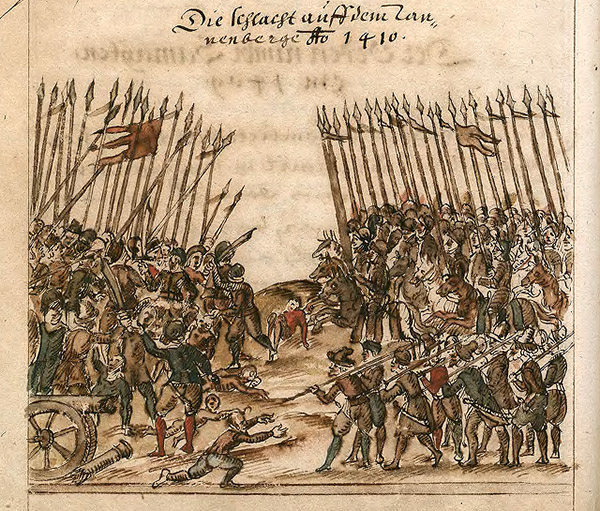
The Battle of Grunwald was a battle of the Great War of 1409–11 that took place on July 15, 1410. The combined army of the Kingdom of Poland and the Grand Duchy of Lithuania, led by the Polish King Władysław II Jagiello and the Grand Duke of Lithuania Vytautas, won a decisive victory over the army of the Teutonic Order.
The battle took place on the territory of the Teutonic Order in the area located between the villages of Grunwald (in the west), Tannenberg (in the northeast) and Ludwigsdorf (in the south), currently located in Poland (approximately 10 km southwest of Olsztynek).
It is difficult to determine the total number of troops that took part in the battle. There is no precise data, and historians, due to their nationality and political motives, are often biased. The estimated number of Polish-Lithuanian troops was between 20 and 27 thousand people, and the Teutonic army was 12-19 thousand.
The Order's losses in the battle were very high - about a third of the Teutonic army fell on the battlefield, a significant number of knights were captured. It is difficult to calculate the total number of the fallen, it is known that more than 200 knights died on the field of the Battle of Grunwald. Among them were almost the entire Order leadership - the Grand Master and almost all the "great managers", as well as most of the commanders. The Order was beheaded.
The day after the battle, Jagiello ordered the captured Teutons to search among the fallen for the body of the Grand Master and other officials who could be identified. As a result, the remains of Grand Master Ulrich von Jungingen, Supreme Commander Kuno von Liechtenstein, Supreme Marshal Friedrich von Wallenrod and the commanders of Thorn (Toruń) and Schlochau (Człuchów), as well as Vogt Roggenhausen (Rogórzno-Zamek, 5 km northwest of Grudziądz) were identified. Their bodies were taken to Osterode Castle (Ostróda) and from there, on the 4th day after the battle, they were transported to Marienburg (Malbork ) . The Grand Master was buried in the castle's Magisterial Vault in the Chapel of St. Anne.
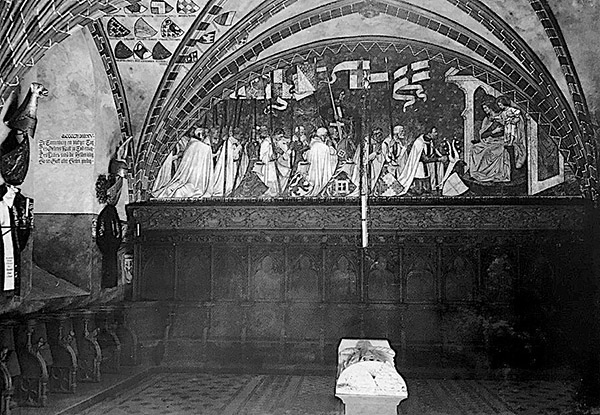
The rest of the fallen from both sides were buried directly on the battlefield. The commanders and other noble persons were buried in the church in Tannenberg by order of Jagiello. All the fallen warriors of the Teutonic and Polish-Lithuanian army were buried in several mass graves near the church and on the battlefield.
The first efforts to preserve the memory of the Battle of Grunwald came from the Polish King Władysław. Two months after the battle, he wanted to build a monastery. On September 16, 1410, the king wrote in a letter to the Bishop of Pomesania (on whose land the battle took place) Johann II Riemann (Bishop of Pomesania from 1409 to 1417) about his intention to build a monastery directly on the site of the battle (in loco conflictus).
In the Middle Ages, building monasteries to commemorate victories and military successes was a common practice and even a sacred duty in caring for the salvation of the souls of both the survivors and the fallen. Earlier, the Order had founded several monasteries after victories over the Lithuanians, which were given greater importance.
On April 7, 1311, near the village of Voplavki (approximately 2 km northeast of Rastenburg), the army of the Order, led by the Grand Commander Heinrich von Plocke, defeated the Lithuanian army under the command of the Lithuanian Duke Viten. In honor of this victory, a Cistercian women's monastery was founded in Thorn that same year under the patronage of St. Jacob, whose cathedral was located next to the monastery.
On February 2, 1348, on the Streva River (near Kovno), the army of the Order, led by Grand Commander Winrich von Kniprode, defeated the Lithuanian forces led by Keistut and Olgerd. In 1349, Grand Master Heinrich Dusemer founded a convent in Löbenicht in the name of the Blessed Virgin Mary.
On February 17, 1370, at Rudau (Melnikovo), the Order's troops defeated the Lithuanian forces of Keistutis and Olgerd. The Order achieved victory with great difficulty and losses. In the same year, an Augustinian monastery was founded in Heiligenbeil (Mamonovo) by Grand Master Winrich von Kniprode.
The monastery on the site of the Battle of Grunwald was supposed to be of a mixed type, of the Augustinian rule, and belong to the Birgittine Order, founded by St. Bridget of Sweden at the end of the 14th century. And since the main monastery of the order was located in Sweden, in Vadstena, the original letter was preserved in the Uppsala archive.
Here is a translation of the main part of the letter:
"Since the power of God, though not without our own merit, has given us victory over our enemies... we have decided to build on the place where we fought with the Prussian crusaders, called Grunfeld, a monastery of the Augustinian rule and the Order of St. Bridget in honor of Almighty God and John the Baptist, the Trinity, as well as the Blessed Virgin Mary and the twelve apostles, the holy Martyrs Adalbert and Stanislaus, and in honor of St. Mary the Blessed. The brothers and sisters of this order living in the aforementioned place will be free from begging for alms and will be able to constantly ask for the mercy of our Creator for us, our predecessors and successors, and for the salvation of the souls of those who perished in this struggle.
We intend to endow this monastery with sufficient means so that a permanent and lasting memory may be preserved in it. Therefore, we ardently and sincerely ask your fatherhood to consider, approve, approve and confirm our foundation of this particular monastery in the appropriate place of our battle, and, in particular, to consecrate the new church.
Given in the camp near Marienburg on the third day after the octave of the birth of Saint Mary (i.e. September 16) in the fourteen hundred and tenth year of the Lord."
German researchers believe that the inspiration and author of the letter was the king's secretary and future cardinal Zbigniew Oleśnicki.
But the monastery was never built. Three days after the letter was written, the siege of Marienburg was lifted and the united army retreated to Poland. The king no longer had time to found monasteries.
After the end of the war, a small wooden chapel was erected at the supposed site of Master von Jungingen's death.
On September 16, 1412, Pope John XXIII (recognized by the Catholic Church as an antipope) issued a bull, after an appeal from the Master of the Order, Heinrich von Plauen, which spoke of a chapel on the site of the battle and of 18,000 fallen soldiers. With the pope's permission, all those who donated to the chapel, as well as those who showed mercy to it, as well as pilgrims to it, were forgiven of their sins. Six chaplains were to pray around the clock for the salvation of the souls of the fallen and the living.
The bull with the papal seal was kept in the city archives of Königsberg until the Second World War.
On March 12, 1413, the stone chapel was consecrated on the battlefield of Grunwald by the above-mentioned Bishop of Pomesania Johann II together with the order priest and six vicars. A description of these events was left by the continuer of the "Chronicle of the Prussian Land" Johann Posilge. The consecration took place in the presence of the master and great administrators, as well as residents of the surrounding villages and towns, who presented gifts to the chapel. The chapel was dedicated to the Virgin Mary.
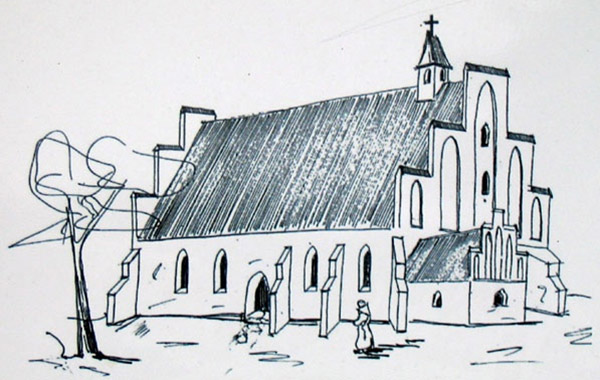
A year later, in the summer of 1414, during the "hunger war", the chapel was destroyed by the Poles. The chapel was subsequently restored, but in a more modest form. Since then, a list of "Decoration in the church on the battlefield" has been preserved, dated 1416, which was kept before the war in the Königsberg archive. It mentions the altar vestments of chaplains and acolytes, church books with hymns and prayers, chalices and silver jugs, tin candlesticks, rings and flags.
For several centuries the chapel was a place of pilgrimage. Pilgrims and sufferers came not only from Prussia, but also from other European countries.
Not far from the chapel there was a pond, into which, according to legend, the blood of those killed in the Battle of Grunwald flowed. A reflection of this legend can be read in the work of the Polish historian Jan Dlugosz - "When they (the wine barrels) were broken by order of the king, the wine poured onto the corpses of the fallen, of which there were considerable heaps at the site of the enemy camp, forming a red stream when mixed with the blood of the slain people and horses; it was visible how it flowed to the meadow of the village of Tamberg (Tannenberg), forming a channel and banks with its flow like a rain stream. From this, they say, arose the reason for the spread of fictions and fables among the people, as if so much blood was spilled in this battle that it flowed like a stream."
For a long time, the waters of this pond were considered healing, and sick pilgrims who came here were supposedly cured of illnesses, injuries, and even blindness with the help of these waters. After that, they threw an offering into the pond, and left their old clothes on the shore. The miracles with the water ended with one lady deciding to heal her dog there, according to one version, from lameness, according to another, from blindness. History is silent about what happened to the dog, but the waters of the pond lost their healing properties.
At the turn of the 16th and 17th centuries, the chapel gradually deteriorated and fell into disrepair. Services were only occasionally conducted by a Protestant priest from the neighboring village of Müllen (Mielno, Poland). Ultimately, the chapel was plundered and destroyed in the mid-17th century during the Tatar raid on Prussia. And then Prussian and German historians only mention its ruins.
At the beginning of the 20th century, the ruins of the chapel were cleared thanks to the initiative and efforts of the district building inspector Hoffman and the district administrator von Brandt. The ruins were uncovered down to the foundations, photographs were taken and measurements were taken.
The total length of the building with the apse is 28.5 meters, width - 10.75 m, internal length - 24 m, width - 8 m, diameter of the apse - 3.07 m. The height of the walls (at the beginning of the 20th century) from a meter to one and a half, the thickness of the walls in the lower part at the level of the foundation was 1.3 - 1.6 m, in the upper preserved part - 0.8 m. The building was oriented along the east-west line.
Currently, the walls of the chapel, laid out of field stones, are clearly visible on the field of the Battle of Grunwald and are recognized as an architectural monument.
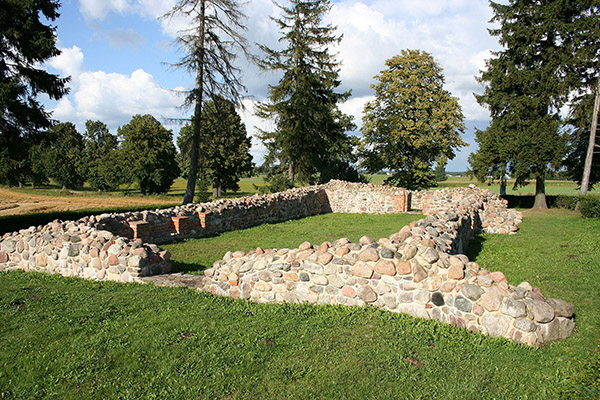
Since the end of the 19th century, the district administrator from Osterode (Ostrød) von Brandt proposed to erect a memorial monument on the site of the Battle of Grunwald, but due to a lack of funds, the idea was never implemented. In the end, it was decided to erect only a monument to the Master of the Order Ulrich von Jungingen, who died in the battle. The provincial commission for the study and protection of monuments approved this idea and funds in the amount of 1,400 marks were allocated. In the autumn of 1901, a granite boulder found in a grove between the villages of Ludwigsdorf and Grünfelde was purchased. This stone was popularly called the Royal Stone or the Jagiello Stone, since according to legend, the king rested on this stone after the battle. The stone was processed in Königsberg by the famous mason Pelz. It weighed more than 200 centners and was 2.5 meters high.
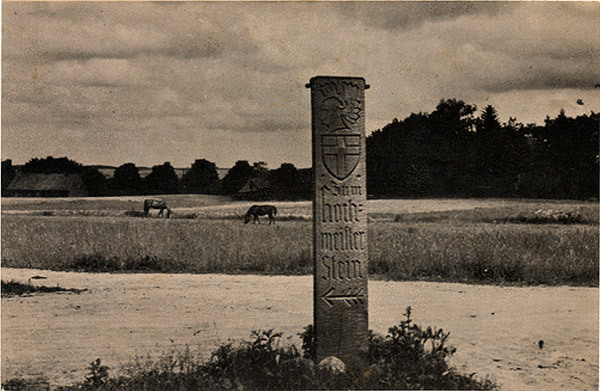
A stone was erected on the ruins of the chapel. The inscription carved in the center read:
In the struggle for German existence and German law, Grand Master Ulrich von Jungingen died a heroic death here on July 15, 1410.
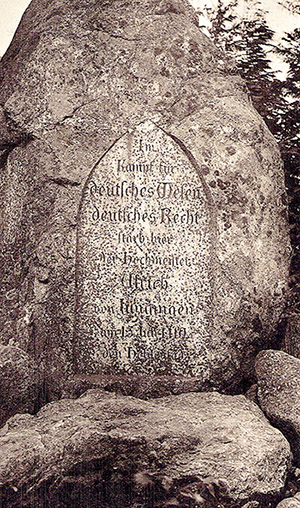
At present, this inverted stone lies with the inscription facing down next to the chapel. 200 meters to the north, among the trees, a new stone in memory of the deceased master is installed horizontally with an inscription in Polish: "Place of death of Grand Master Ulrich von Jungingen."
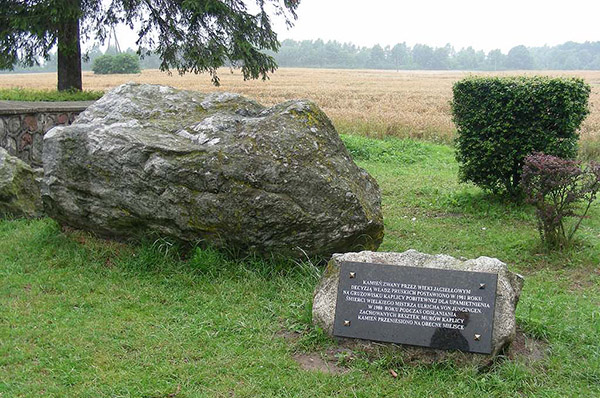
These are the main monuments of that battle, erected in Prussia. One could separately tell about the military burials on the battlefield, as well as the surviving artifacts of that battle. But that is another story.
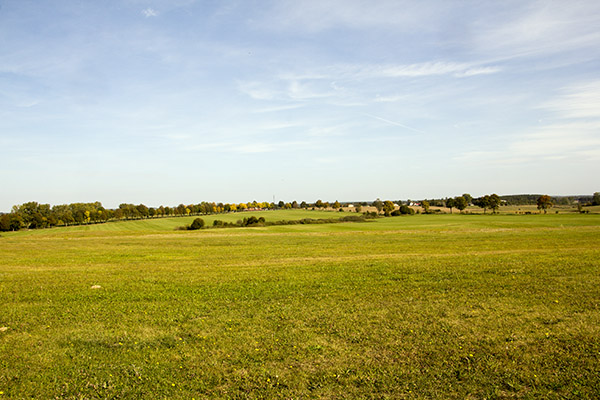
Sources:
Scriptores Rerum Prussicarum. The social changes of the Pre-Russian Empire to the bottom of the military order. Erster Band. Hrsg. Theodor Hirsch, Max Töppen, Ernst Strehlke. Leipzig: Verlag von S. Hirzel, 1861.
Scriptores Rerum Prussicarum. The social changes of the Pre-Russian Empire to the bottom of the military order. Zweiter Band. Hrsg. Theodor Hirsch, Max Töppen, Ernst Strehlke. Frankfurt am Main: Minerva, 1965.
Boetticher A. The paintings and art galleries of the Eastern Province. Heft III: The Oberland. Königsberg, 1898.
Conrad G. The conversation about the fallen Master Ulrich of Jungingen on the Tannenberg Castle // General Information Papers, No. 5, 1903.
Schnippel Dr. The "Grunfeld Cloister" and the Chapel "at the Street Square" near Tannenberg // Oberlandische Geschichtsblätter, No. 12, 1910.
Schnippel Dr. The Rittergrab of Tannenberg // Oberlandische Geschichtsblätter, No. 11, 1909.
Strehlke E. A Cloister on the Tannenberger Castle // Old Monthly Book, Vol. 7, 1870.
Voigt J. The results of the last century were from the basis of the German Order's leadership. Old Band: The Time of Master of Ceremonies Ulrich of Jungingen from 1407 to the Time of Masters Paul of Rußdorf from 1441. Königsberg, 1836.
